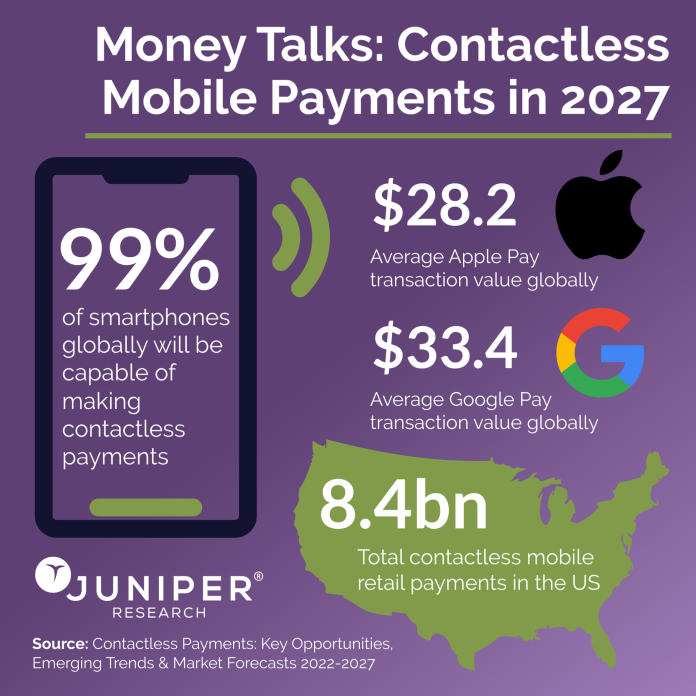A new study from Juniper Research has found that the value of contactless payment transactions will reach $10 trillion globally by 2027; from $4.6 trillion in 2022. It anticipates that investment in the underlying contactless payments ecosystem, such as contactless‑enabled POS (Point-of-Sale) terminals and device-level support, will be the key driver of contactless transactions value growth over the next 5 years.
Transition to Cashless Society Driving Growth
The research predicts that the push towards cashless societies will drive growth, as countries look to decrease their reliance upon cash. Mobile and wearable contactless payments are anticipated to grow by 221% between 2022 and 2027. This growth owes to the convenience that mobile and wearable payments offer consumers, eliminating the need to carry and produce a contactless card; easing the burden of transitioning away from cash. In comparison, contactless card payments are anticipated to grow by only 119% during the same period.
Furthermore, the report identified that the high growth of POS terminals capable of accepting contactless payments is also fuelling this growth. Accordingly, the research urges POS vendors to prioritise convenience when designing NFC solutions for the market, which can cater to the growing number of devices that offer NFC payment capabilities.
Contactless Ticketing Set for Strong Growth
The research anticipates that contactless ticketing spend is set to grow by over 440% between 2022 and 2027. NFC ticketing has recovered strongly following the easing of pandemic-related restrictions, and is forecast to continue rising rapidly over the next 5 years.
This growth will be further accelerated by the rapid deployment of NFC ticketing solutions across public transport networks, with the aim of reducing payment friction for customers. In turn, the report urges vendors to foster adoption of their NFC ticketing solutions; targeting the public transport sector in developed regions that are increasingly seeking out ways to improve ticketing efficiencies.






